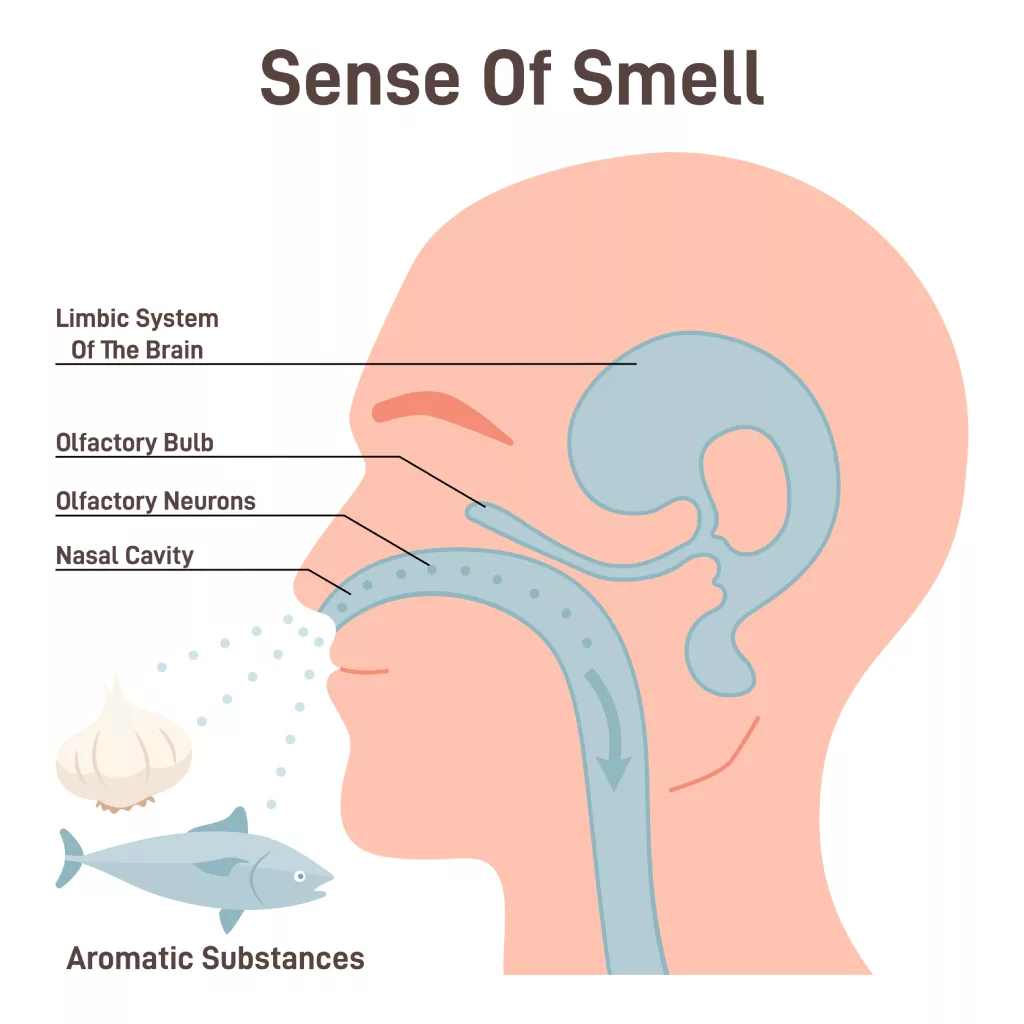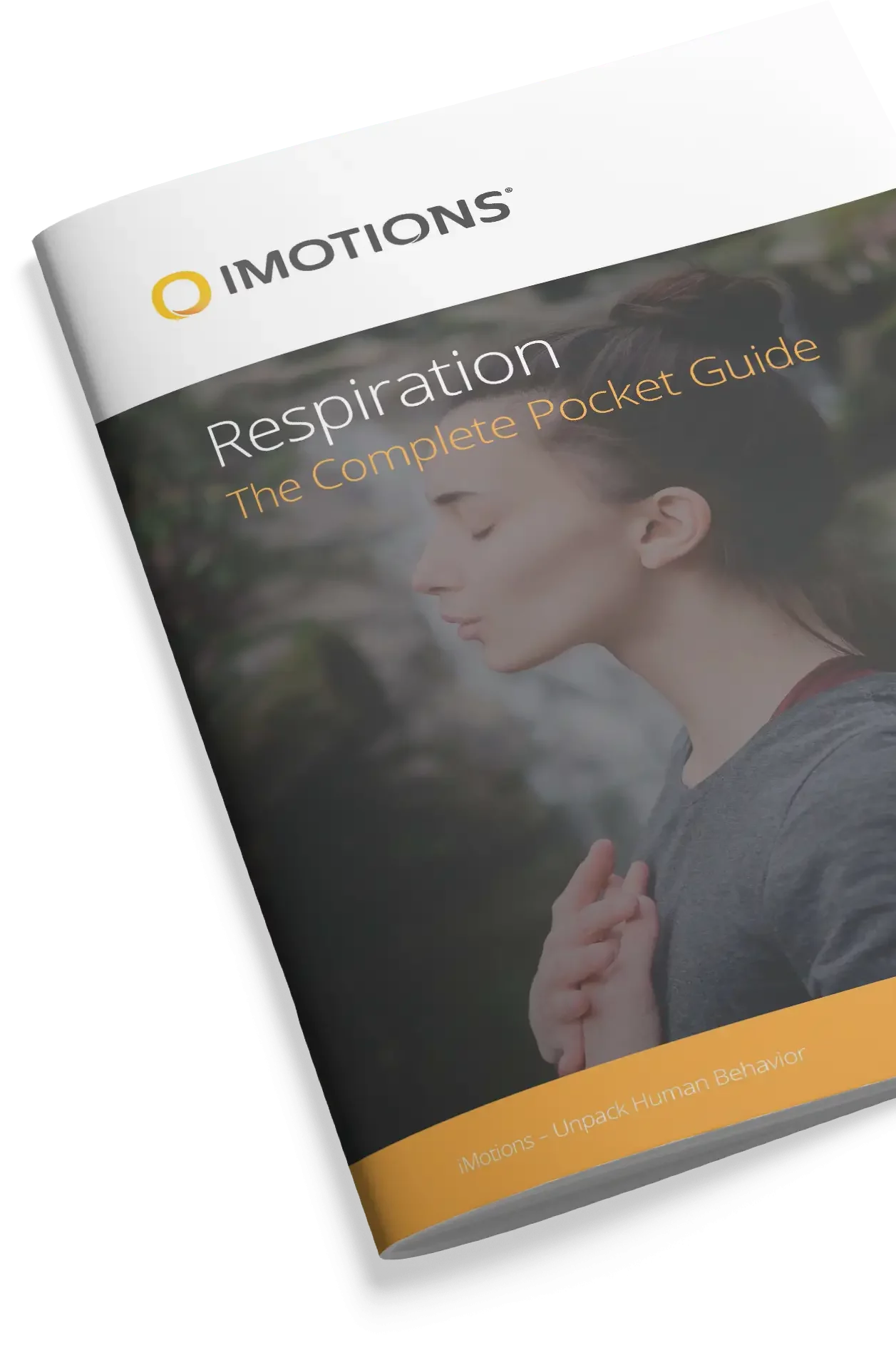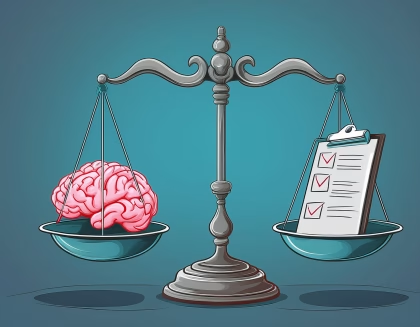Explore the impact of respiration on cognition and emotion: Unravel how the simple act of breathing, experienced over 500 million times in a lifetime, plays a critical role in memory formation, cognitive load management, and emotional regulation. Delve into pioneering research that unveils the intricate relationships between respiration and our mental processes, offering new insights into the non-invasive exploration of human behavior and psychological states through the lens of our breaths.
We breathe roughly 500 million times in our lifetimes. About 23 million happened in the first year of your life. By the time you’ve hit 18, you’ve gone through about 200 million. Breathing slows down a lot as you age (fortunately).
Respiration is the process of breathing. This is the physiological definition, but it can also be defined biochemically – both ultimately point to a process in which cells use oxygen to gain energy.
As Feldman and Negro (2016; [1]) point out in their seminal paper regarding respiration “Breathing persists from birth until death” – that is to say, it’s rather important. This importance extends beyond mere survival however, as respiration helps regulate pH levels in the blood, regulates temperature (for non-primate mammals, at least), and it’s also associated with many of our inner cognitive processes. We think and we breathe, we breathe and we think. Figuring out these associations provides a neat and largely novel route to understanding cognition and behavior.
The exact mechanisms underlying breathing as an action in the brain involve a fairly complex interplay of signals within the brainstem and olfactory areas of the brain – the latter where airflow meets gray matter. From the olfactory sensory neurons, to the olfactory bulb, to the olfactory cortex, and then the neocortex – the cycle goes on. The brainstem also likely (in science nothing is ever certain) imposes some order on the whole process now and again [2]. This however, isn’t the end of it.

Within only the last few years (from 2014 to be exact, and first only in mice [3]) have researchers related respiratory activity to brain processes outside of those aforementioned olfactory areas [4]. These studies provide a basis for understanding how respiration can be directly linked to behaviors not related to breathing. The field is still in its infancy. Pioneering research opportunities are rarely so clear to see.
Research examining the general relationships between respiration and emotions or cognitive load has a longer history, yet these fields are still relatively new (largely emerging in the late 1990’s, [5, 6]). Below, we will go through some of the research examining the connections between respiration and memory, cognitive load, and emotions.
Respiration and memory
Memory is a complicated thing. In many ways, it’s surprising that there’s any form of relationship between breathing and recall – up until the recent slew of studies, there was no reason to think of any direct link between the areas associated with respiration and memory-making.
One of the first studies examining respiration, memory, and the brain is from Zelano and others, in 2016 [7]. Participants were exposed to rapid-fire photographs of faces expressing either fear, or surprise. They found that breathing in – through the nose in particular – was associated with detecting fearful faces more quickly than when breathing out. They also presented participants with a range of images of everyday objects, finding that participants were more likely to remember objects when they had been breathing in at the same time when they had first seen the images. So if you have something important to remember – take a deep breath.

The real trick of the study however was to link the brain activity to the respiratory cycles, showing that brain activity was increased during inspiration (breathing in), and was present in areas beyond the olfactory regions – particularly within limbic-related brain areas, including amygdala and hippocampus (the former associated with the fear response, the latter with memory formation).
While Zelano’s study looked at very brief moments in time, research by Arshamian examined the influence of breath over the course of a full hour [8]. Participants were presented with 12 odors, asked to memorize them, then were outfitted with nose clips or tape to ensure that they breathed exclusively through their nose or mouth for an hour. They were then presented with a lineup of 24 odors, and asked to identify which ones were familiar. The results showed better performance for the nose breathers – while it’s unclear if this holds true for non-olfactory memory, for now, the nose leads the way for better recall.
Respiration and cognitive load
Thinking can be demanding – it’s no surprise then that this can be reflected by respiration. The brain requires more resources when cognitive load is high and the input of oxygen (and removal of carbon dioxide) is part of that process. Research has shown that mentally demanding moments result in more oxygen being obtained through a faster breathing rate [6, 9].
Interestingly, the measure known as “tidal volume” – the amount of air taken in during a single breath – doesn’t appear to be related to the amount of cognitive load. The measure “minute ventilation” – the amount of air taken in over a minute – is however related to cognitive load, but doesn’t appear to be particularly sensitive to task difficulty. What this all means, when put together, is that breath frequency appears to be the best method by which to measure cognitive load – but the depth of those breaths doesn’t seem to matter [6].
Finally, for those who find themselves sighing when faced with a difficult math problem, you can know that you’re not alone – the measure known as “sighing rate” (pretty self-explanatory) is found to be “increased in response to mental arithmetic” [6, 10, 11]. The current explanation is that this emerges as a way to counteract erratic breathing – the breathing rate verges on the edge of danger and needs resetting. The simple advice to “take a deep breath” does then have a scientific basis (and so does the occasional need to sigh when presented with math).
While the authors devised the experiment so that the sighing could be reasonably assumed to derive from the cognitive load alone, there can be another cause for sighing in response to math – and that is the emotion it creates.
Respiration and emotions
The connections between emotions and breathing have been explored since at least the beginning of the 20th century – first in a study that also arose from one of the very first studies looking at facial expressions and emotions (they state “the revived feelings express themselves as clearly in the respiratory muscles as they do in the facial muscles” [12]).
The researchers at the time predicted that “As each emotion has a characteristic expression, we may expect to find corresponding changes in the respiratory apparatus”. While that proved to be largely true within their study, the methods lack the rigor and control that is expected of science today. The research has evolved since then.
As Homma and Masaoka [5] point out in their 2008 study: “Emotions involve physiological changes within the entire body” – and this inevitably includes respiration. It is now known that changes in emotional arousal mostly result from changes in the autonomic system, and these changes effect a lot: heart rate, temperature, blood flow, sweating (electrodermal activity), pupil size, respiration, and more [13].
Respiration presents another route to accurately detect the rise and fall of emotions – and a route that is likely more accurate than explicit description. As Wu et al [14] state, “Because the physiological changes expressed by emotions are not voluntarily controlled, they may provide a more accurate reflection of the true emotional experiences people may be having”.

While it’s clear that respiration can provide information about an individual’s emotional state, it’s less clear if it can provide information about which emotional state they’re in. We might know that someone is emotionally aroused – but not necessarily the valence. There is however some research that points in this direction.
For example, research has shown that more shallow and rapid breathing is associated with negative emotions [15, 16], while positive emotions are associated with increased variability of breaths, as well as a reduced amount of time breathing in, and a reduction in the amount of air breathed in [15]. Research has also shown that feelings of disgust can lead to breath-suppression, which is speculated to be an attempt by the body to avoid inhalation of something harmful [15, 17].
However, relating breaths to emotions is a complex task – emotions are rarely static and isolated. Complicating things further, it’s known that not only can emotions influence respiration, but that respiration can influence emotions [16]. More research, as ever, is needed.
As Jerath and Beveridge [17] stated in 2020: “Future developments in measurement and psychophysiological understanding of the pattern of breathing in combination with other parameters such as HRV, cardiorespiratory synchronization, and skin conductivity may allow for biometric monitoring systems to one day accurately predict affective state and even affective disorders such as anxiety.”. It’s clear that respiration will – likely in concert with other biosensors – help elaborate an understanding of emotions to new depths of detail.
Conclusion
While the examples above give an overview of the recent research examining respiration, the field is still relatively unexplored. There is still much ground to cover and discover. Combining respiration measurements with other biosensors can provide a streamlined route to triangulating responses, and to understanding how our breaths shape how we behave – and vice versa.
What’s clear is that respiration is intimately tied to cognitive and emotional processes, making it a neat, non-invasive method that can dig deep into human behavior.
Free 29-page respiration Guide
For Beginners and Intermediates
- Learn about its anatomy and mechanisms
- Read about application in various research fields
- Overview of the different ways of collecting and processing respiration data

References
[1] Feldman, J. L., & Del Negro, C. A. (2006). Looking for inspiration: New perspectives on respiratory rhythm. Nature Reviews Neuroscience, 7(3), 232–241. https://doi.org/10.1038/nrn1871
[2] Folschweiller, S., & Sauer, J.-F. (2021). Respiration-driven brain oscillations in emotional cognition. Frontiers in Neural Circuits, 15. https://doi.org/10.3389/fncir.2021.761812
[3] Ito, J., Roy, S., Liu, Y., Cao, Y., Fletcher, M., Lu, L., Boughter, J. D., Grün, S., & Heck, D. H. (2014). Whisker barrel cortex delta oscillations and gamma power in the awake mouse are linked to respiration. Nature Communications, 5(1). https://doi.org/10.1038/ncomms4572
[4] Heck, D. H., Correia, B. L., Fox, M. B., Liu, Y., Allen, M., & Varga, S. (2022). Recent insights into respiratory modulation of brain activity offer new perspectives on cognition and emotion. Biological psychology, 170, 108316. https://doi.org/10.1016/j.biopsycho.2022.108316
[5] Homma, I., & Masaoka, Y. (2008). Breathing rhythms and emotions. Experimental Physiology, 93(9), 1011–1021. https://doi.org/10.1113/expphysiol.2008.042424
[6] Grassmann, M., Vlemincx, E., von Leupoldt, A., Mittelstädt, J. M., & Van den Bergh, O. (2016). Respiratory changes in response to cognitive load: A systematic review. Neural Plasticity, 2016, 1–16. https://doi.org/10.1155/2016/8146809
[7] Zelano C, Jiang H, Zhou G, Arora N, Schuele S, Rosenow J, et al. (2016). Nasal respiration entrains human limbic oscillations and modulates cognitive function. The Journal of Neuroscience, 36(49), 12448–12467. 10.1523/JNEUROSCI.2586-16.2016
[8] Arshamian, A., Iravani, B., Majid, A., & Lundström, J. N. (2018). Respiration modulates olfactory memory consolidation in humans. The Journal of Neuroscience, 38(48), 10286–10294. https://doi.org/10.1523/jneurosci.3360-17.2018
[9] Allen, M. T., & Crowell, M. D. (1989). Patterns of autonomic response during laboratory stressors. Psychophysiology, 26(5), 603–614. https://doi.org/10.1111/j.1469-8986.1989.tb00718.x
[10] Vlemincx, E., Taelman, J., De Peuter, S., Van Diest, I., & Van den Bergh, O. (2011). Sigh rate and respiratory variability during mental load and sustained attention. Psychophysiology, 48(1), 117–120. https://doi.org/10.1111/j.1469-8986.2010.01043.x
[11] Vlemincx, E., Van Diest, I., & Van den Bergh, O. (2012). A sigh following sustained attention and mental stress: effects on respiratory variability. Physiology & behavior, 107(1), 1–6. https://doi.org/10.1016/j.physbeh.2012.05.013
[12] Feleky, A. (1916). The influence of the emotions on respiration. Journal of Experimental Psychology, 1(3), 218–241. https://doi.org/10.1037/h0073754
[13] Gordan, R., Gwathmey, J. K., & Xie, L. H. (2015). Autonomic and endocrine control of cardiovascular function. World journal of cardiology, 7(4), 204–214. https://doi.org/10.4330/wjc.v7.i4.204
[14] Wu, N., Jiang, H., & Yang, G. (2012). Emotion recognition based on physiological signals. In Advances in Brain Inspired Cognitive Systems: 5th International Conference, BICS 2012, Shenyang, China, July 11-14, 2012. Proceedings 5 (pp. 311-320). Springer Berlin Heidelberg.
[15]Boiten F. A. (1998). The effects of emotional behaviour on components of the respiratory cycle. Biological psychology, 49(1-2), 29–51. https://doi.org/10.1016/s0301-0511(98)00025-8
[16] Masaoka, Y., & Homma, I. (2001). The effect of anticipatory anxiety on breathing and metabolism in humans. Respiration physiology, 128(2), 171–177. https://doi.org/10.1016/s0034-5687(01)00278-x[17] Jerath, R., & Beveridge, C. (2020). Respiratory Rhythm, Autonomic Modulation, and the Spectrum of Emotions: The Future of Emotion Recognition and Modulation. Frontiers in psychology, 11, 1980. https://doi.org/10.3389/fpsyg.2020.01980











